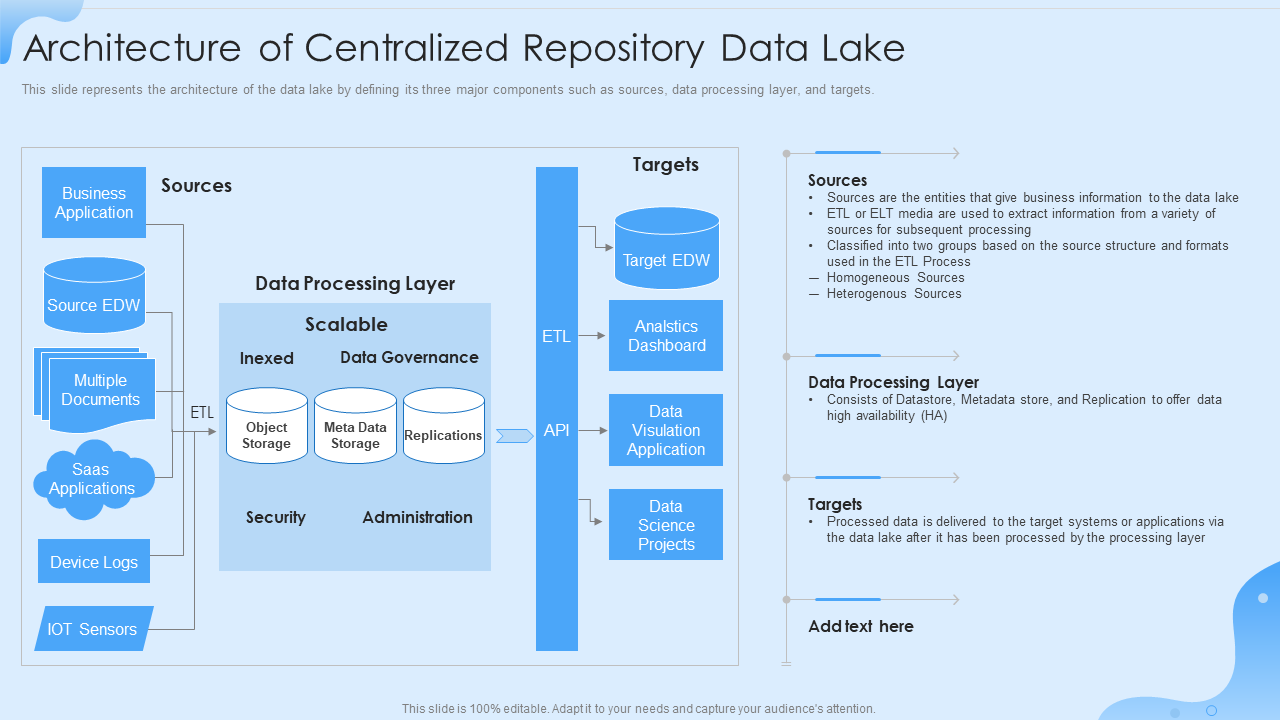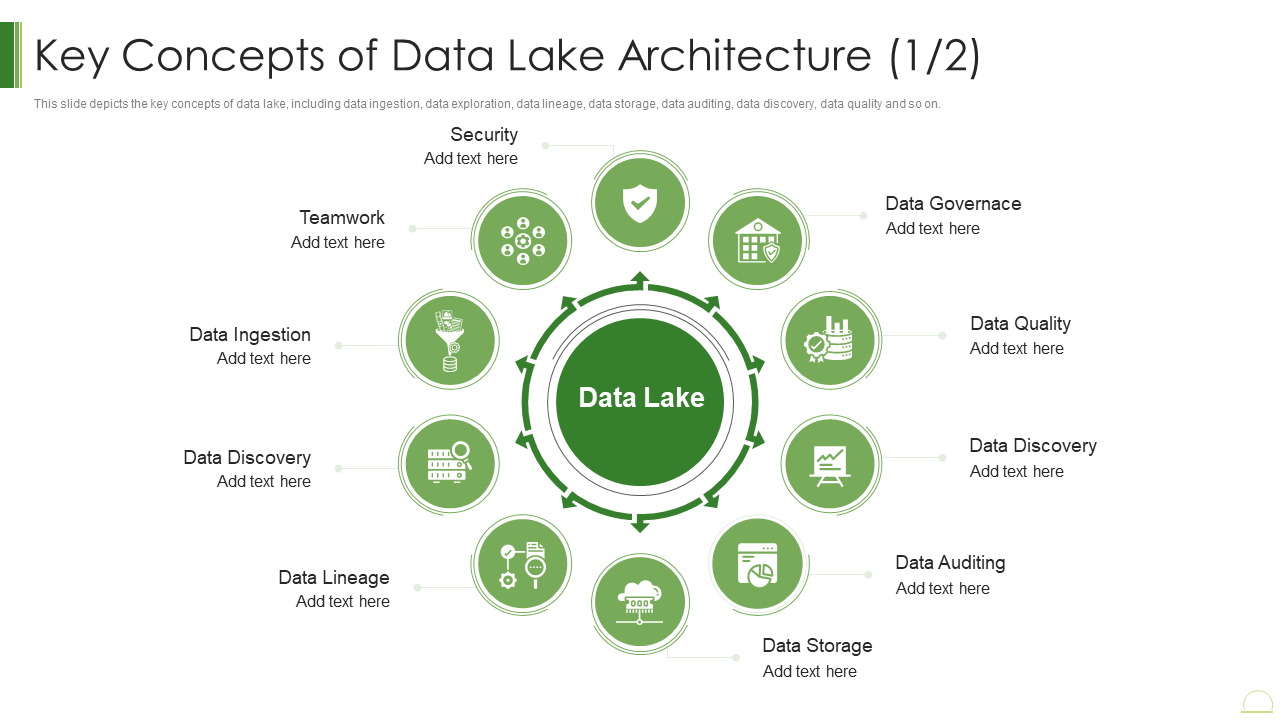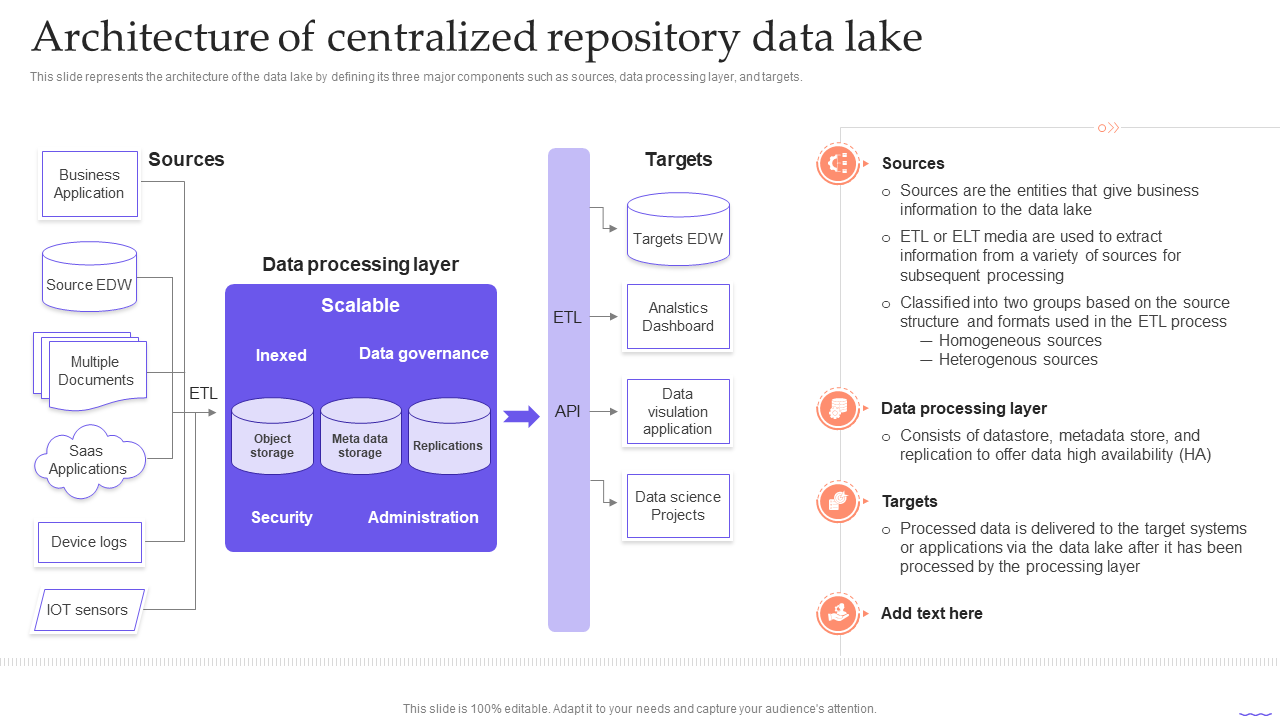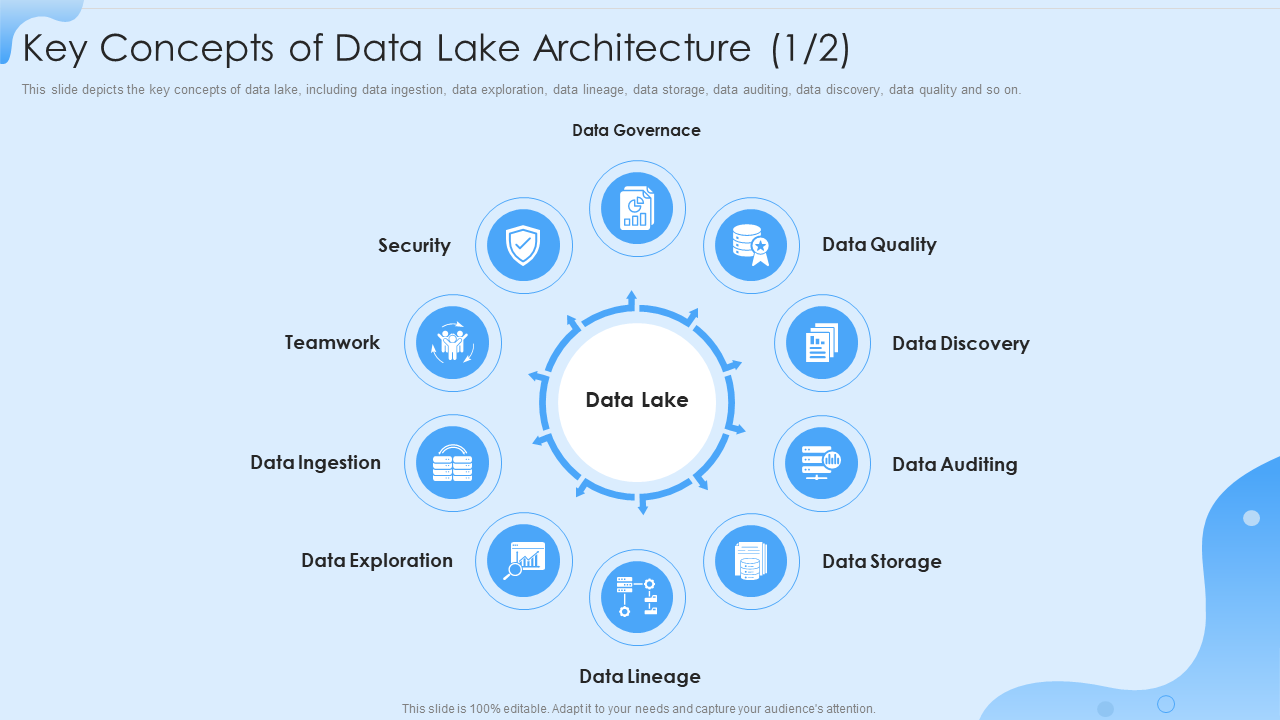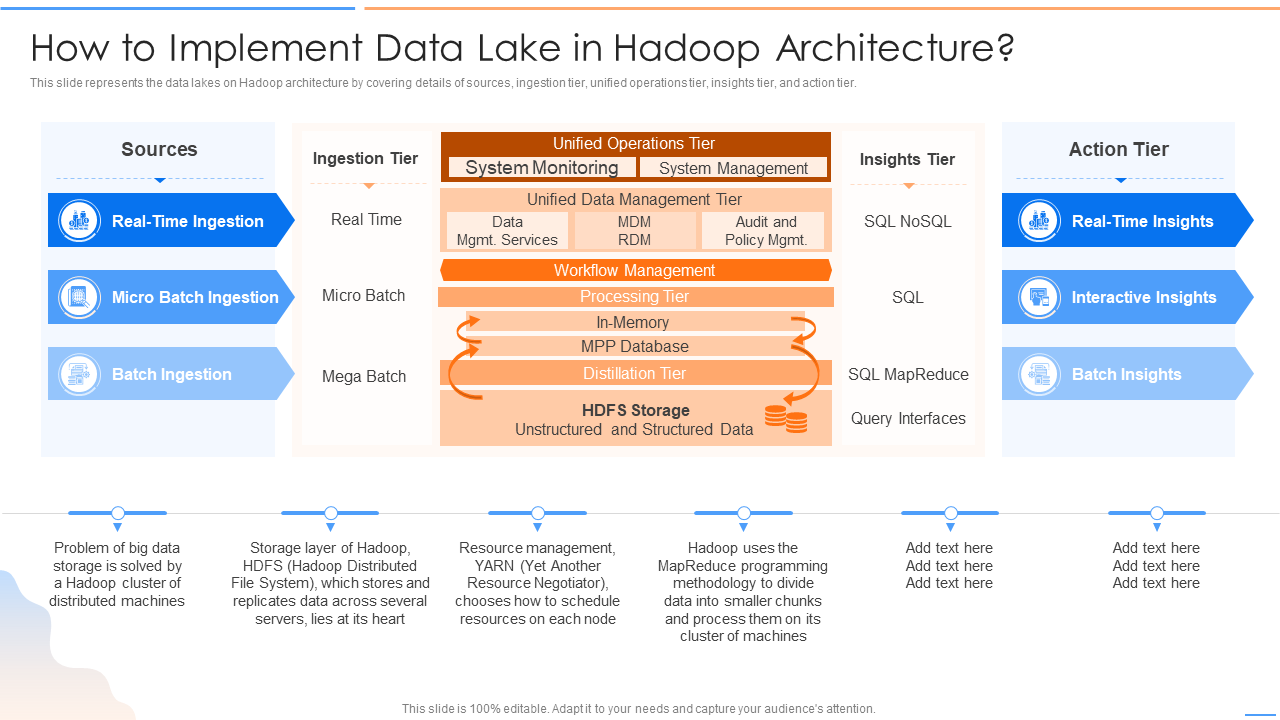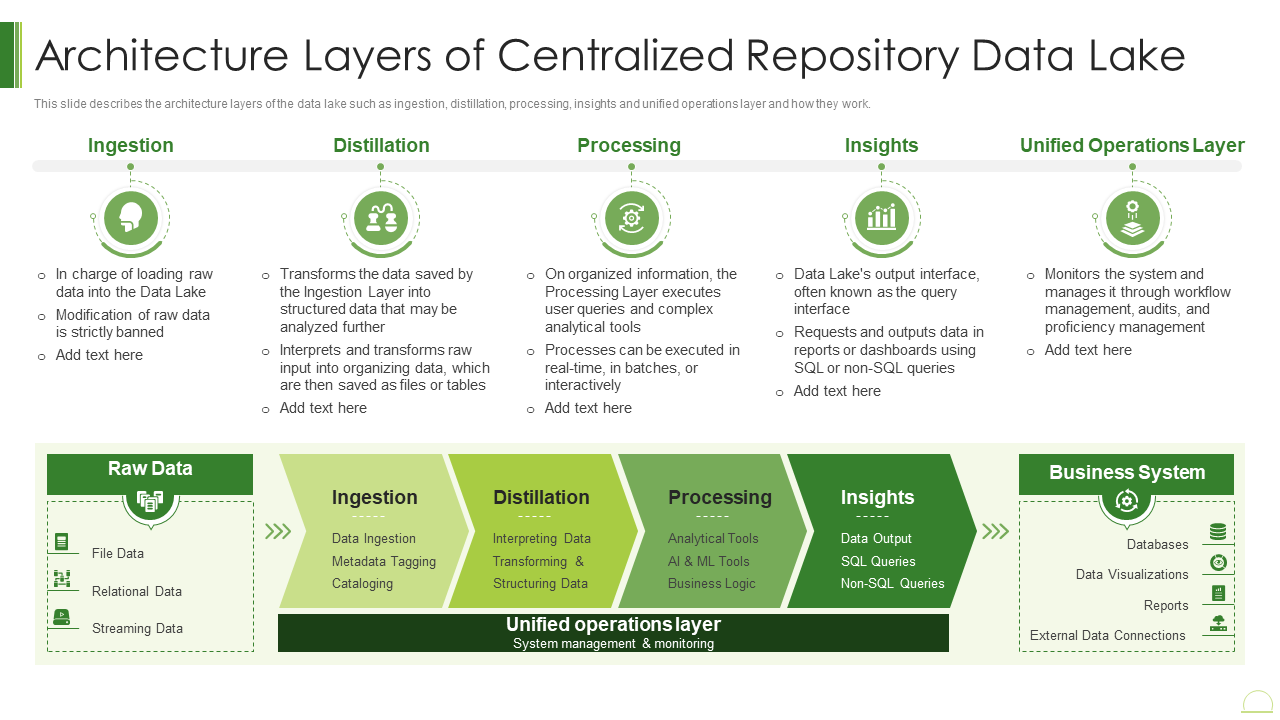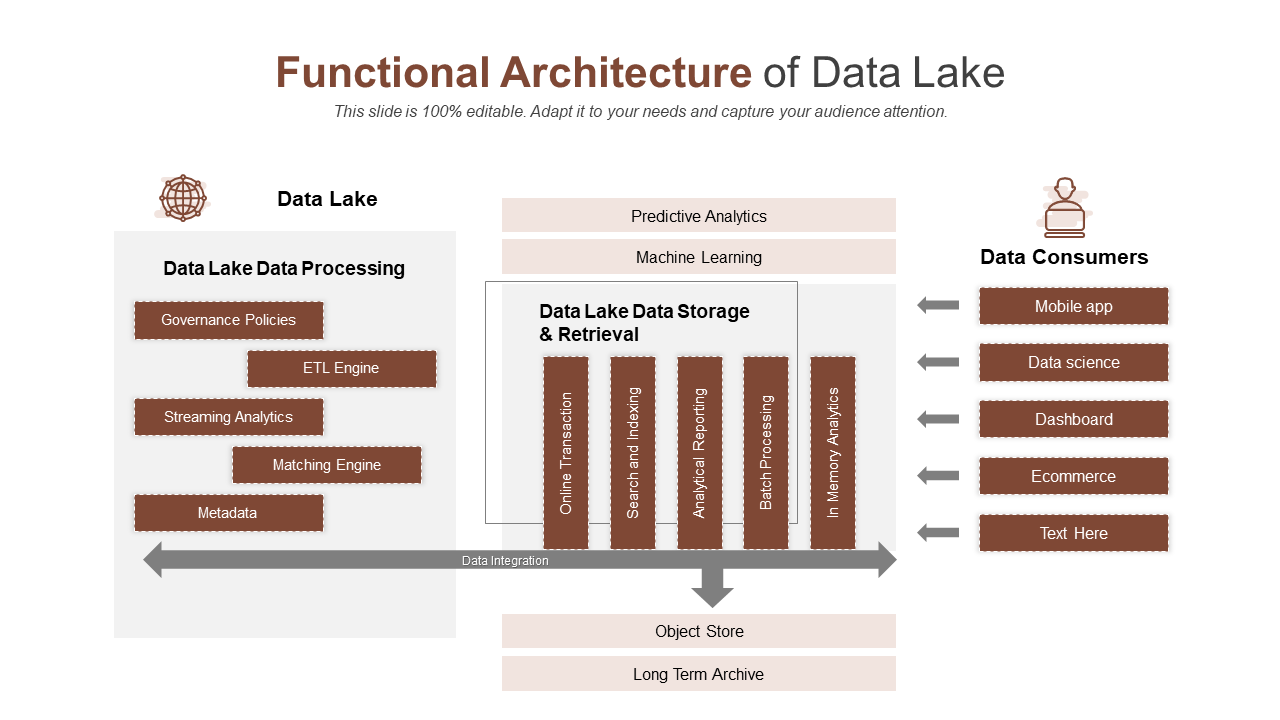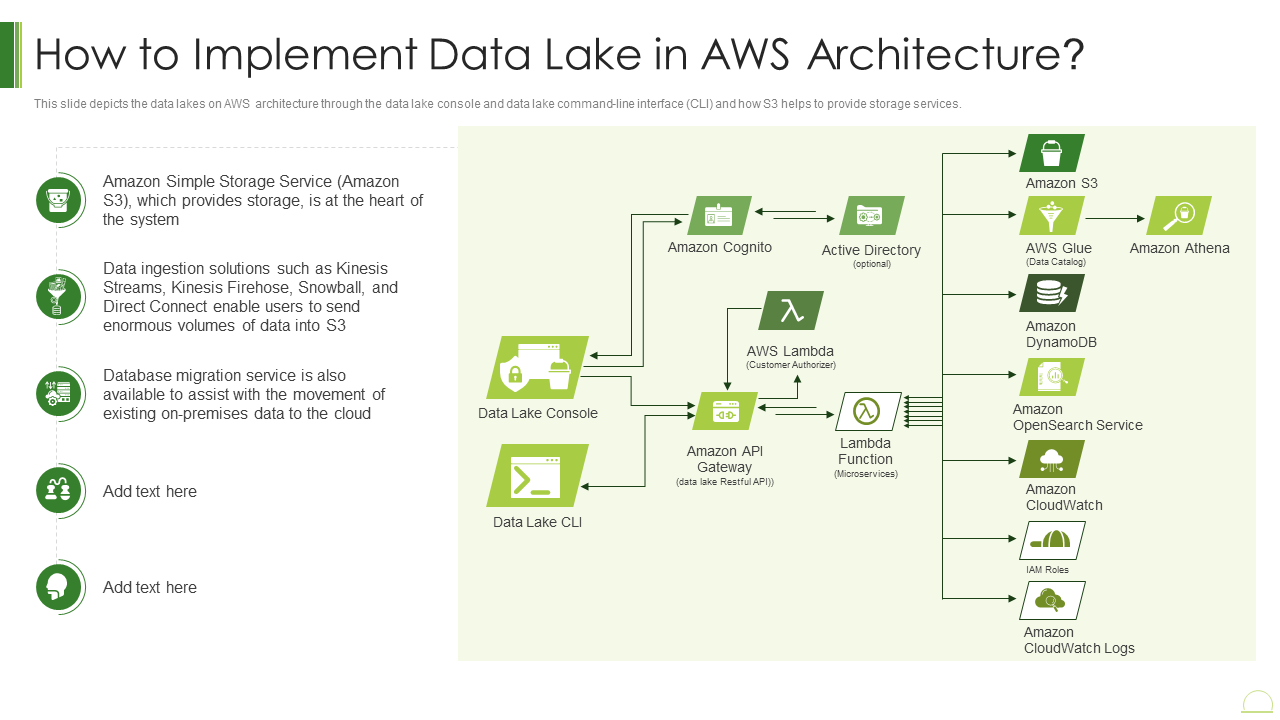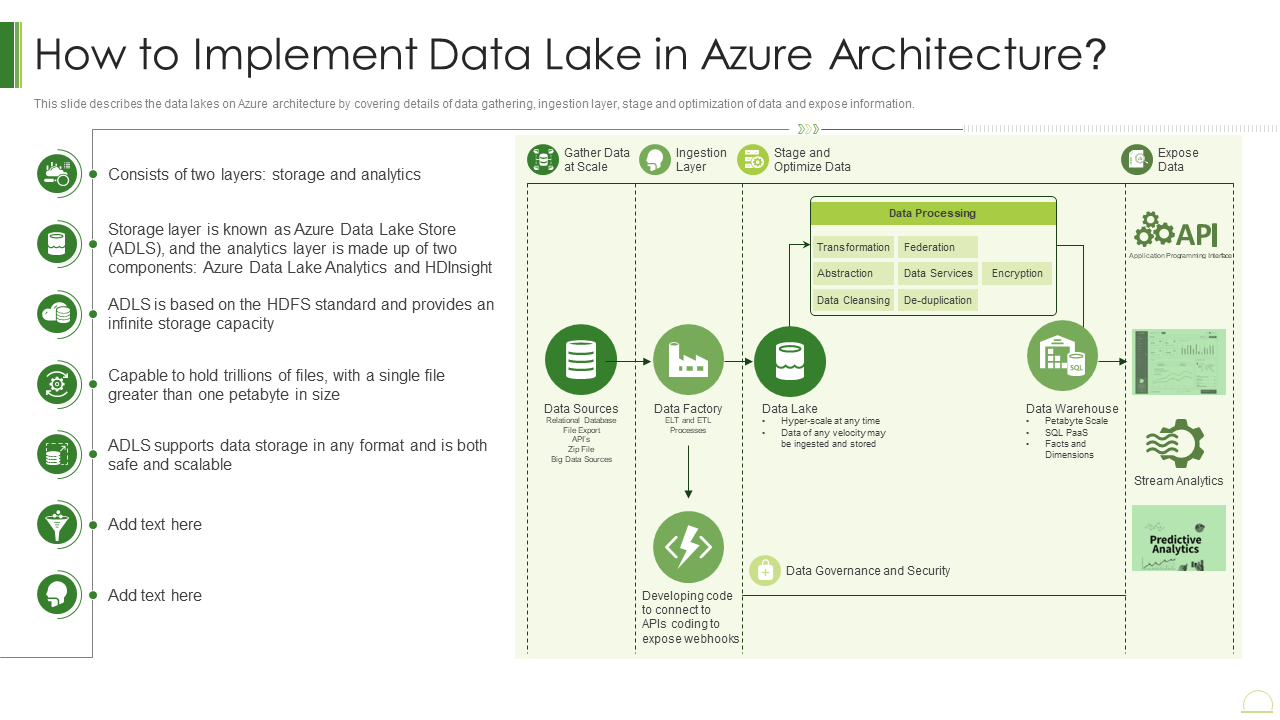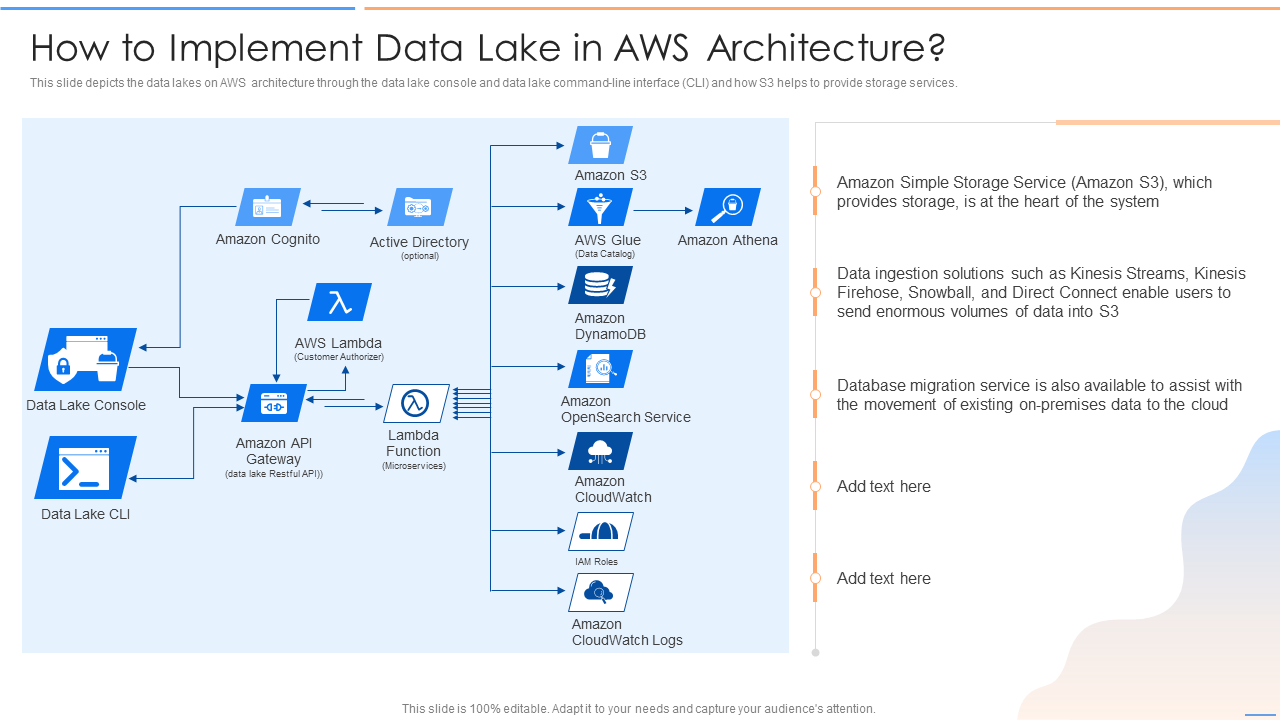Do you remember the catastrophic data breach that happened to Equifax, one of the largest credit reporting agencies in the US, in 2017? The breach exposed sensitive information, including Social Security numbers, birth dates, and addresses, of over 143 million people. It was a nightmare for both the company and the affected individuals. What if I told you that having a data lake could have prevented this disaster?
According to a recent report, the average cost of a data breach is around $3.86 million. Furthermore, companies can take up to 280 days to identify and contain a breach. With the growing number of cyber threats and the increasing amount of data companies handle, a robust data management system has become an absolute necessity. This is where data lakes come in.
If you're looking to improve your company's data management, then our Data Lake Architecture PPT Templates are what you need.
Our templates are designed to help you understand the concept of data lakes and their benefits. With visually appealing graphics and easy-to-understand content, you can use our templates to educate your team on the importance of data lakes and how to implement them effectively.
Template 1: Data Lake Formation Architecture of Centralized Repository Data Lake
A data lake is one of the most critical architectural concepts for making artificial intelligence a reality. Therefore, our PPT Template will assist you! With this design, you can hold large amounts of data in its raw format. This slide depicts the data lake's architecture by defining its three major components: sources, data processing layer, and targets. Today, onboard your data while optimizing the cost.
Template 2: Key Concepts of Data Lake Architecture
Use our PPT Template to provide data scientists with an unvarnished view of data. This design allows you to be more agile in your business. The slide also highlights data ingestion, data exploration, data lineage, data storage, and other key concepts of data lakes. Now is the time to download and enjoy cost-effective scalability and flexibility.
Template 3: Architecture of Centralized Repository Data Lake
Incorporate our PPT Design in which the data store is passive, and the data store's clients (software components or agents) are active, controlling the logic flow. The elements involved will also help you check the data store for changes. This slide depicts the data lake's architecture by defining its three major components: sources, data processing layer, and targets. You can increase audience engagement and knowledge by distributing information on our slide. The primary goal of this style is to achieve data integrality.
Template 4: Key Concepts of Data Lake Architecture
Get this content ready PPT Template to store much raw, granular data in its native format. It is a single repository that contains structured, semi-structured, and unstructured data. With our design, you can broaden and deepen your understanding of data lake architecture. Data lineage, storage, auditing, discovery, quality, and other related topics are covered.
Template 5: How to Implement Data Lake in Hadoop Architecture PPT Template
This data management platform primarily processes and stores non-relational data. This slide lets you send modified data sets or summarized results to the established data warehouse for further analysis. Hadoop data lakes are a less expensive way to store analytics data. This design includes information about the sources, the ingestion tier, the unified operations tier, the insights tier, and the action tier. Download now to gain a better understanding of all your data.
Template 6: Architecture Layers of Centralized Repository Data
Our professional PPT template offers an in-depth exploration of the essential architectural layers of centralized repository data. The presentation provides valuable insights into the system's five layers: ingestion, distillation, processing, wisdom, and the unified operational layer. The ingestion layer involves collecting and storing raw data, while the distillation layer organizes and transforms this data into a more manageable format. Use can then use the processing layer to analyze the refined data, generating valuable insights for the organization. The insights layer then utilizes this information to provide actionable recommendations. At the same time, the unified operational layer integrates these insights into the company's day-to-day operations, driving growth and profitability.
Template 7: Functional Architecture of Data Lake
This powerful PPT Slide unlocks the secrets of data lakes, explaining core concepts such as data processing, storage, retrieval, and consumption. Designed for both technical and non-technical audiences, this presentation provides valuable insights into the complex world of data management, helping users to navigate the challenges of building and maintaining a modern data infrastructure.
Template 8: How to Implement Data Lake in AWS Architecture
This comprehensive PPT Framework offers invaluable insights into implementing a data lake in AWS architecture. It presents step-by-step guidance on setting up and maintaining an efficient data lake in AWS, empowering users to handle large volumes of data easily. This template lets users explore various data ingestion solutions, such as Kinesis Streams, Firehouse, Snowball, and more. Additionally, it delves into data migration services, providing users with a deeper understanding of how to transfer data from one source to another seamlessly.
Template 9: How to Implement Data Lake In Azure Architecture
Our PPT Framework is a must-have resource for anyone who wants to implement Data Lake in Azure Architecture. It provides step-by-step guidance on gathering data at scale, setting up the ingestion layer, storing and optimizing data, and exposing data for efficient analysis. This PPT Framework helps streamline your data management process and reduce costs while gaining valuable insights from your data. This template guides you through every aspect of implementing a Data Lake in Azure Architecture with clear and concise explanations, detailed diagrams, and practical examples. Start optimizing your data today with this comprehensive and user-friendly PPT Presentation!
Template 10: Data Lake Future of Analytics How To Implement Data Lake in AWS Architecture
The PPT Framework provided offers a comprehensive guide to implementing a data lake in AWS architecture, offering valuable insights and step-by-step guidance on setting up and maintaining an efficient data lake in AWS. This resource enables users to easily handle large volumes of data and explore data ingestion solutions, including Kinesis Streams, Firehouse, Snowball, and more. Furthermore, it offers detailed information on data migration services, helping users understand how to transfer data from one source to another seamlessly. Download now to access this essential resource.
Take Control of Your Data
Data lakes are becoming an increasingly crucial aspect of modern business operations. With the amount of data generated each day growing exponentially, it's essential to have a centralized and scalable system for storing, processing, and analyzing this information. At SlideTeam, we understand the importance of a robust data management system, so we've created our Data Lake Architecture PPT Presentation. With a download of these, you will have access to a wealth of information and resources to help you keep pace in the ever-changing landscape of data management.
FAQs on Data Lake Architecture
What is the data lake concept?
The data lake concept is a modern data management architecture designed to store large volumes of raw and unstructured data in a centralized repository. The idea behind a data lake is to provide organizations with a scalable and cost-effective solution for storing and processing data without the need for complex data transformation and normalization processes up-front.
Unlike traditional data management systems that require data to be transformed and organized before being stored, data lakes allow for storing raw data, which can be processed and analyzed in various ways depending on the organization's needs. This approach provides a high degree of flexibility and agility, allowing businesses to extract value from their data quickly and efficiently.
Data lakes can be implemented on-premises or in the cloud, supporting varied data types, including structured, semi-structured, and unstructured data. By implementing a data lake, organizations can gain a comprehensive view of their data and leverage advanced analytics tools to extract valuable insights that can drive business growth and profitability.
What are the three layers of a data lake?
A data lake has three layers, each serving a specific purpose:
- Raw Data Layer: This layer is the bottom-most layer of the data lake, where all the raw and unprocessed data is stored. This layer typically includes data from various sources, such as social media, transactional databases, IoT devices, etc. This layer is often called the "landing zone," with the data stored in its native format without any transformation.
- Data Processing Layer: The second layer of the data lake is the data processing layer. This layer is responsible for processing and transforming the raw data stored in the first layer into a more usable format. Data processing may involve data cleaning, normalization, integration, and enrichment. This layer typically uses technologies like Apache Spark, Apache Hive, and Apache Pig to process and transform the data.
- Analytics Layer: The topmost layer of the data lake is the analytics layer. This layer is responsible for analyzing the processed data and generating insights that you can use to drive business decisions. The analytics layer typically includes tools like business intelligence (BI) dashboards, machine learning models, and other advanced analytics tools. The insights generated from this layer can be used to improve business operations, enhance customer experience, and identify new business opportunities.
How do you build a data lake architecture?
Building a data lake architecture involves several key steps. Here is an overview of the main steps involved in building a data lake:
- Define Business Objectives: The first step in building a data lake architecture is to define the business objectives the data lake will support. It involves identifying the data types that will be stored, the analytics that will be performed, and the project's expected outcomes.
- Determine Data Sources: Once the business objectives are defined, the next step is identifying the data sources you can integrate into the data lake. These can include structured, semi-structured, and unstructured data from various sources, such as transactional databases, social media platforms, and IoT devices.
- Choose a Data Lake Platform: The next step is to select a data lake platform that will be used to build the architecture. Popular data lake platforms include Amazon S3, Microsoft Azure Data Lake Storage, and Google Cloud Storage.
- Define Data Storage and Management: After selecting the platform, the next step is to define how data will be stored and managed within the data lake. It includes defining the data schema, partitioning, data compression, access control, and other data storage and management aspects.
- Determine Data Processing: The data lake architecture's data processing layer includes processing raw data into a format that can be easily queried and analyzed. This layer may use tools like Apache Spark, Apache Hadoop, and Apache Hive to process and transform data.
- Implement Data Security: Data security is critical in any data lake architecture. It involves implementing access controls, encryption, and other security measures to ensure data confidentiality, integrity, and availability within the data lake.
- Develop Analytics and Visualization: The final step in building a data lake architecture is to develop the analytics and visualization tools that will be used to analyze and visualize the data stored in the data lake. It may involve tools like Tableau, Power BI, and other analytics and visualization platforms.


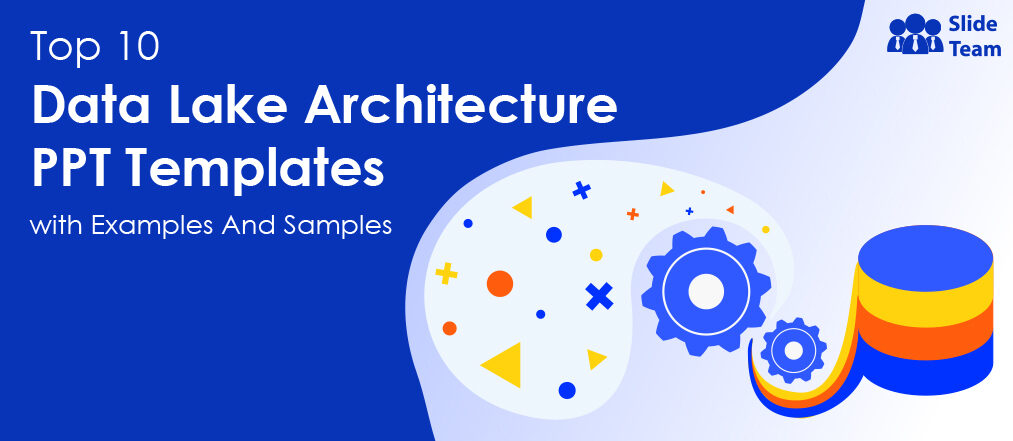


 Customer Reviews
Customer Reviews

